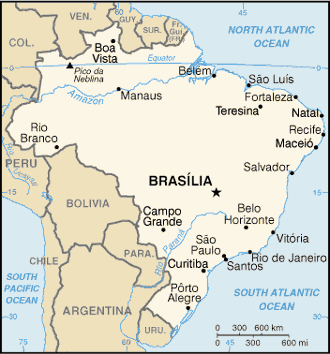Since the first cases of local transmission of chikungunya virus in the Western hemisphere last December on St. Martin, the epidemic has spread, particularly throughout the Caribbean and more recently in Central and South America. According to the Pan American Health Organization (PAHO) Nov. 7, there are 888,806 suspected and confirmed autochthonous transmission of chikungunya in the Americas.

In Brazil, 173 confirmed locally acquired chikungunya cases have been reported to the PAHO. There are three strains of chikungunya–West African, East/Central/South African (ECSA), and Asian–the current epidemic in the Americas being caused by the Asian derived genotype.
However, officials at Evandro Chagas Institute in Brazil say they have confirmed a second strain, an African strain in the eastern coast of the country. Scientific American reports that director of the Evandro Chagas Institute, Pedro Vasconcelos said one of the country’s 26 states it has detected the more problematic African strain of chikungunya, the 2nd to arrive in Brazil.
Both Aedes aegypti and Aedes albopictus have been implicated in large outbreaks of chikungunya. The African strain has been accumulating mutations that allow it to be spread more easily by Aedes albopictus. Whereas Ae. aegypti is confined within the tropics and sub-tropics, Ae. albopictus also occurs in temperate and even cold temperate regions. Ae. albopictus is common in the eastern U.S.
The good news to date is the African strain seen in Brazil does not appear to have developed several mutations detected in Southeast Asia, which makes it much more infectious to mosquitoes.
How does this African strain affect the epidemic and the US? Scott Weaver with the The University of Texas Medical Branch at Galveston says, the appearance of the African genotype of chikungunya “is just going to make a bad situation worse.”
US health officials say that travelers to the Caribbean and Central and South America need to take preventive measures against mosquito bites as the outbreak in these regions will continue through the fall and winter seasons and beyond.
For more infectious disease news and information, visit and “like” the Infectious Disease News Facebook page

